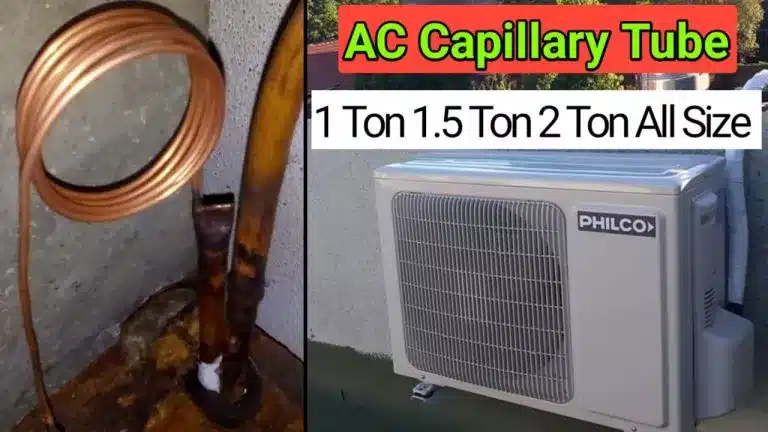
Introduction capillary tube size and length
The size and length of a capillary tube in an air conditioning system play a crucial role in regulating the flow of refrigerant, which is essential for the system’s cooling efficiency. Capillary tubes are commonly used as metering devices in smaller air conditioning systems, such as window units and some residential split systems. They are simple, cost-effective, and reliable components that help control the flow of refrigerant from the high-pressure side (condenser) to the low-pressure side (evaporator) of the air conditioner.
Size of Capillary Tube:
The size of the capillary tube, typically measured in terms of its inner diameter, is a critical factor in determining the rate at which refrigerant flows into the evaporator coil. The size is usually specified in inches or millimeters, and common sizes range from 0.03 inches (0.76 mm) to 0.06 inches (1.52 mm). The choice of capillary tube size depends on several factors, including the cooling capacity of the system, the type of refrigerant being used, and the desired operating conditions.
| AC Size | Capillary size | Capillary length |
|---|---|---|
| 1 Ton | 0.055 | 32 Inch |
| 1.5 Ton | 0.060 | 27 Inch |
| 2 Ton | 0.064 | 28 Inch |
Length of Capillary Tube:
The length of the capillary tube is equally important and is typically specified in meters or feet. The length is carefully selected to create the necessary pressure drop, which helps in maintaining the proper refrigerant flow rate and temperature in the evaporator. A longer capillary tube generally results in a greater pressure drop and a slower flow of refrigerant, while a shorter tube results in a lower pressure drop and a faster flow.
The length of the capillary tube is a design parameter that engineers and technicians calculate based on the specific requirements of the air conditioning system. Factors such as the desired evaporator temperature, refrigerant properties, and system design all influence the choice of capillary tube length.
Balancing Size and Length:
Selecting the right combination of capillary tube size and length is a delicate balancing act. An improperly sized or dimensioned capillary tube can lead to inefficient cooling, poor temperature control, or even system malfunction. It’s crucial for HVAC professionals to use their expertise and calculations to determine the appropriate size and length for a given air conditioning system.
In summary, the size and length of a capillary tube in an air conditioning system are essential parameters that impact the system’s performance and efficiency. Properly selecting and sizing the capillary tube is a critical aspect of air conditioning system design and maintenance to ensure optimal cooling and refrigerant flow.



